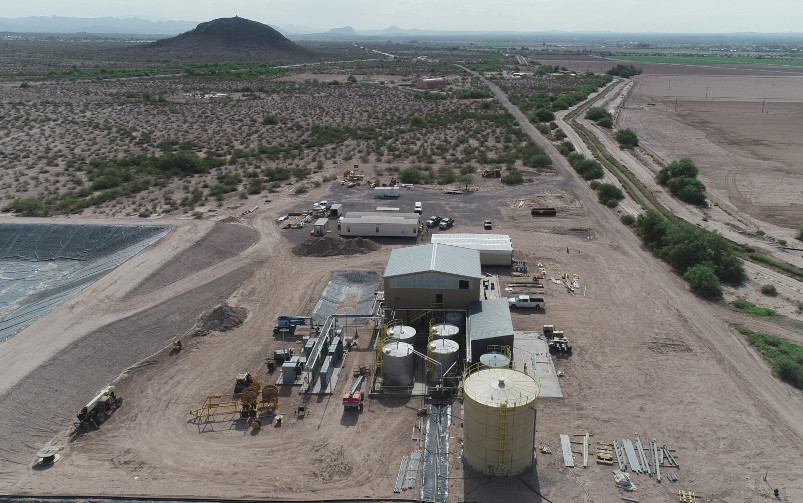The Capital Projects Symposium ended with a panel discussing what matters to financiers when evaluating a mining project. From left to right: Michael Samis, Paul Nielson, Shaun Usmar and Vikram Jayaraman.
Capital expenditures on mining projects grew in 2021 and the trend is expected to continue this year. According to the firm GlobalData, the estimated Capex of 20 major miners will rise 22 per cent to $70.4 billion in 2022. In the past when the money was flowing in, the sector has not always used it well, leaving many investors wary of funding the next generation of projects.
At CIM’s recent Capital Projects Symposium in Toronto, the event concluded with a panel discussion about what really matters to financiers when it comes to backing or buying mining projects and companies. The symposium was created in 2020 to focus on improving project outcomes through the examination of development and execution methods, contracting models and financing options in the mining sector, and was held for the first time as an in-person event in Toronto in late March.
Moderator Vikram Jayaraman, DRA Global’s vice-president, origination, led Michael Samis, principal at SCM Decisions, Paul Nielson, principal and head of development portfolio at Waterton Resource Management, Shaun Usmar, founder, CEO and director of Triple Flag Precious Metals and Alex Black, president and CEO of Rio2 Limited (who participated via video call), on a discussion that shifted the attention from project execution, to project financing
Usmar shared his belief that the mining has turned generalist investors against the industry by not fulfilling promises made in exchange for their money.
“We have broken a contract with generalist investors. We are less relevant,” he said, asking “Why should these pools of capital come to us?”
Usmar, however, is optimistic that once the “greed phase” of mining’s eternal boom-bust investment cycle kicks in, investors will be tempted by mining again, even if they are still wary. Usmar told the audience that once that happens, “the people in this room will have a role to play” to ensure investors know what they are getting into and that mining companies live up to the expectations they create.
Nielson addressed a question about how Waterton evaluated distressed companies prior to making purchasing decisions about them. “The answer is a combination of: fatal flaw – yes or no. Is it irretrievably damaged? Or is it something that, with patience and capital, can be fixed? If it’s patience and capital, that’s our thing. Look at the industry: patience and capital is not what most people have.”
Related: Tough calls around risk and ESG may seem difficult, but they create profits and strong mining businesses
He explained that it is hard to really evaluate what is happening in a distressed company because “if a company is going through a doom spiral, good data management isn’t their priority.” That leaves it up to the buyer to make a judgement call, based on experience, and to build in enough financial leeway to stave off the challenges that are sure to come.
Samis explained that, from his perspective, junior miners do a poor job of telling their own stories to investors and of explaining to those same investors how their capital will be used, and that this is something that they should change if they want to attract more money.
“That’s what I find really surprised me with junior companies: they’re all out there, explaining why they’re such a great deal. ‘Hey, look, X dollars per ounce,’ …but you don't see many people talking about ‘here’s how we’re going to go through the next few stages of exploration and design, here’s what's going to kill our project. Here’s how we’re going to get capital. Here’s how our design reduces the risk of the project.’ And that’s the story that I think is more interesting for potential investors.”
He added that especially in the cases of companies with marginal projects, hearing about what the plans are to reduce risks and manage the project in a “sensible manner” in order to “make some money for investors” should be the real focus of their marketing and sales pitches.
Black, whose Rio2 team are aiming to building a heap leach gold mine in Chile with a staged approach, was asked his thoughts about capital deferrals and got a laugh from the crowd when he answered, “From a junior perspective, that’s what it’s all about.”
He explained that the goal for juniors is to get a project going, and “to keep it as simple as possible.” Black then offered up some of his own management philosophy. “As a CEO, I’ve never really been focused on NPV (net present value). Most junior companies are focused on NPV are looking to sell their projects or companies, which ultimately, doesn’t usually happen. I mean, the takeout ratio is very low in reality.”
He added that what seems to work for him and his companies is focusing on the margins, and making sure he does not have a marginal project and then “looking into the optionality of what you have and getting it into production, and then going from that point.”
After the initial questions to the panels was over, a more free-wheeling approach was taken to the discussion, and leading to a return to the topic of injured investors.
“Genuinely, Nielson observed, “our industry has destroyed so much investor capital. When things are cheap, investors look ahead and say, ‘they’re probably going to get cheaper.’”




